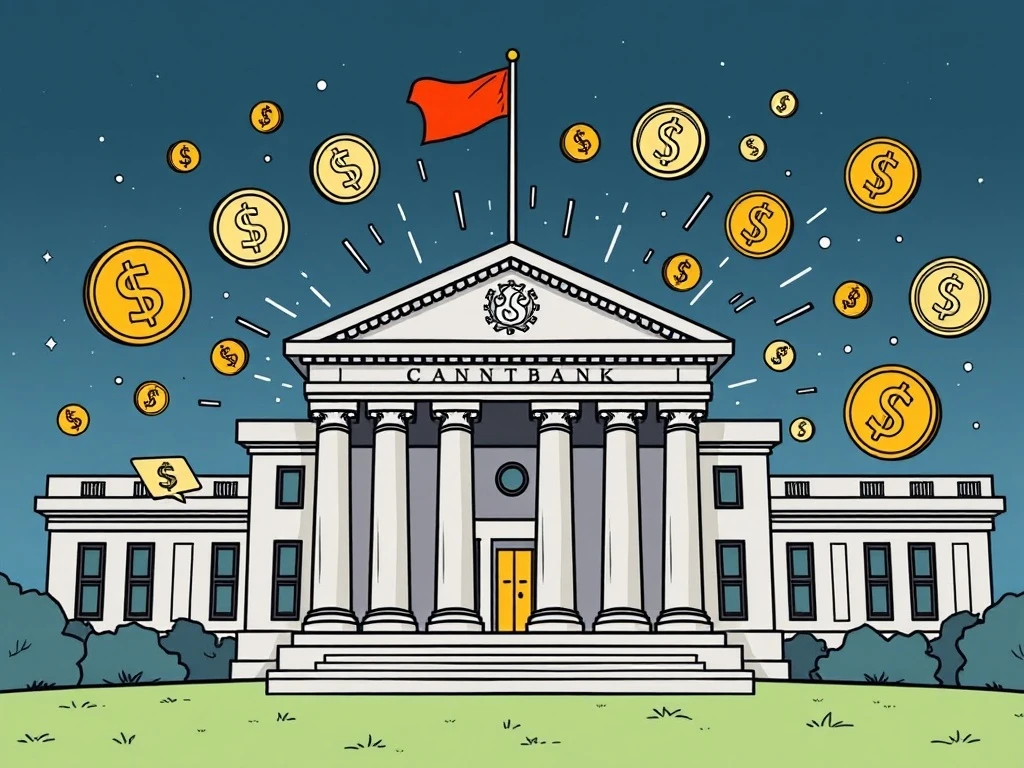Critical Bank of England Warning on Private Stablecoins

The world of finance is rapidly evolving, and few topics spark as much debate as the rise of digital currencies, particularly stablecoins. For those following cryptocurrency news, a significant development comes from a major global financial institution: the Bank of England. Governor Andrew Bailey recently voiced strong concerns about private stablecoin issuance, adding a powerful voice to the ongoing discussion surrounding stablecoin regulation and its potential impact on the global financial system.
What Concerns the Bank of England About Private Stablecoins?
Bank of England Governor Andrew Bailey is not alone in his caution regarding stablecoins. He joins other European officials who have expressed reservations. Bailey’s primary concern centers on the potential for private stablecoins to introduce systemic risks to banking institutions. He suggests these risks could destabilize the entire financial system, potentially leading sovereign governments to lose control over their currencies.
Key points from Bailey’s perspective:
- Banks should avoid issuing stablecoins directly.
- The focus should instead be on tokenizing deposits held within traditional banking structures.
- The UK central bank should not pursue a Central Bank Digital Currency (CBDC) or other centrally-managed digital fiat tokens at this time.
As the new chairman of the Financial Stability Board (FSB), an international financial regulator, Bailey’s position carries significant weight. His stance indicates a potential move towards increased oversight and possible restrictions on the proliferation of stablecoins on an international level.
The Risks of Private Stablecoins
Stablecoins, while designed to maintain a stable value relative to an asset like a fiat currency, can still pose risks. The stability often relies on reserves, which can include cash or short-term government debt. Concerns arise regarding the transparency and liquidity of these reserves, especially for large, widely used stablecoins. A loss of confidence or a ‘run’ on a stablecoin could have ripple effects, potentially impacting traditional financial markets if stablecoin issuers hold significant traditional assets.
Bailey’s warning highlights the view that allowing private entities extensive control over digital currency issuance, especially those pegged to national currencies, could erode the central bank’s ability to manage monetary policy and ensure financial stability.
Differing Global Views: UK/EU vs. US on Stablecoin Regulation
Interestingly, the UK and European stance contrasts sharply with recent developments in the United States. The Trump administration has made establishing comprehensive stablecoin regulations a high priority. US Treasury Secretary Scott Bessent stated at a White House summit that stablecoins could extend US dollar dominance globally.
The US perspective suggests that by allowing private companies to tokenize US debt instruments, demand for US debt could spread, potentially relieving inflationary pressure on the dollar. Federal Reserve chairman Jerome Powell has also supported the idea of cohesive stablecoin policies in the US.
However, European counterparts have repeatedly raised alarms about the US approach, warning that widely adopted dollar-denominated stablecoins could threaten the EU financial system and potentially displace the euro as a significant currency.
Potential Benefits of Stablecoins
Despite the regulatory concerns, stablecoins offer potential benefits. They are a significant sector within the crypto market and can enhance the geographic reach of fiat currencies. By bringing payment rails onto a blockchain, they can reduce reliance on robust traditional banking infrastructure for cross-border transfers, potentially democratizing access to major currencies like the US dollar or euro for individuals and businesses in regions with less developed banking systems.
Conclusion: An Ongoing Debate Over Financial Stability
The debate surrounding stablecoins and their regulation is far from settled. The Bank of England’s warning underscores the cautious approach taken by some major central banks, prioritizing financial stability and control over monetary policy. This contrasts with the more optimistic view in the US, which sees stablecoins as a tool to reinforce US dollar dominance. As stablecoins continue to evolve and gain adoption, the differing global regulatory approaches will remain a critical point of tension and discussion for the future of finance.








